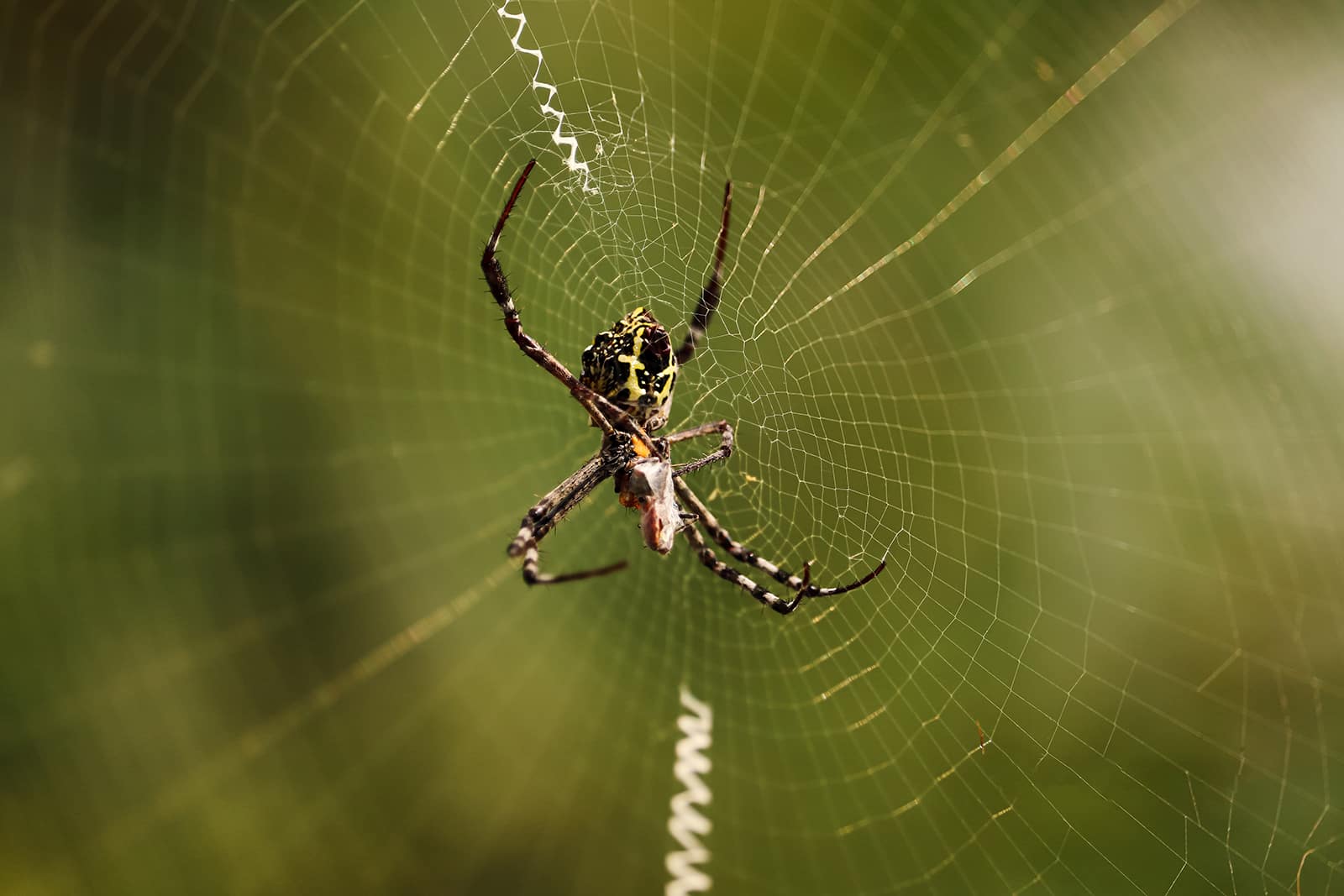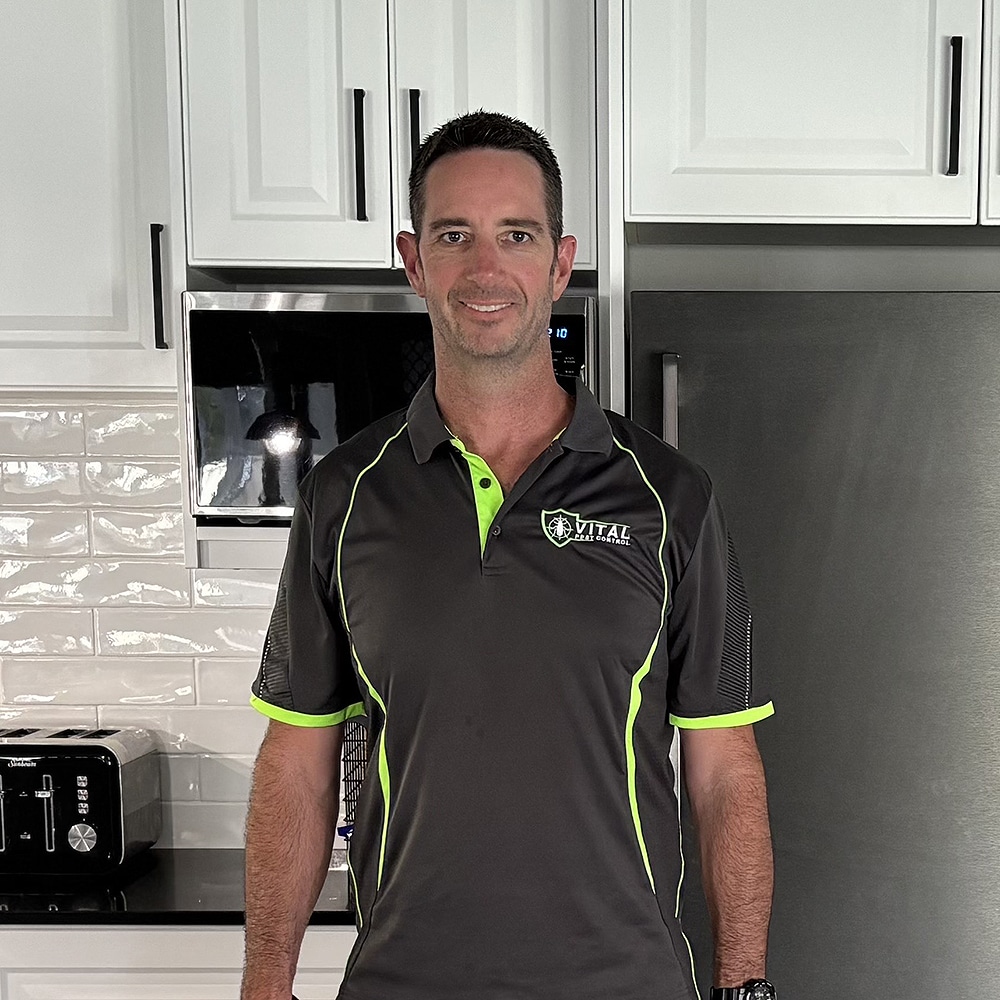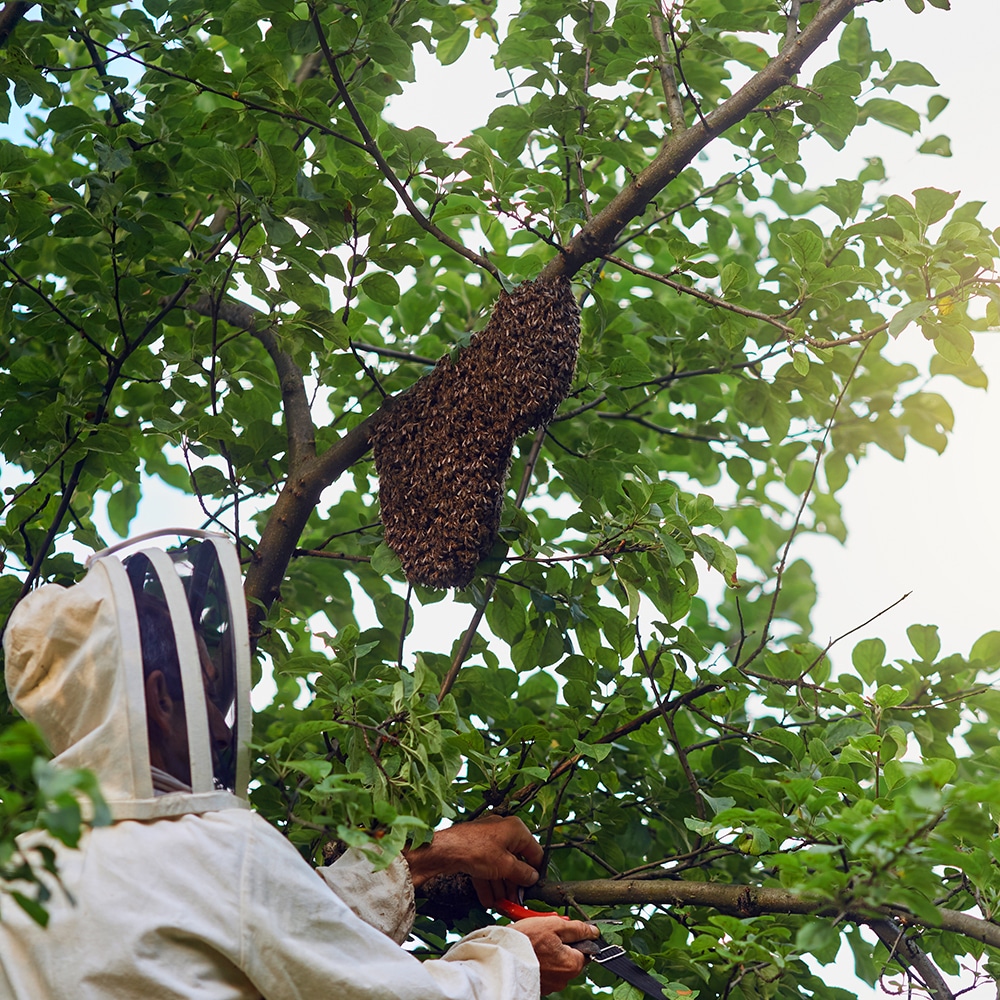
Why Do Spiders Come Back And Why
Why Do Spiders Come Back And Why On The Central Coast NSW. Responsive Proactive Solutions. Detail-focused for lasting results. Call Adam on 0431 222 894
Getting started with DIY pest control can be both rewarding and effective. For those living on the Central Coast NSW, understanding the basics ensures a successful outcome. Before you begin, consider reaching out to Vital Pest Control for professional insights and support.
Basic Safety Gear
Always wear protective gear to ensure personal safety. Gloves, masks, and goggles protect you from harmful chemicals. Reliable safety measures prevent accidents and promote peace of mind.
Reading Product Labels
Product labels provide crucial information about usage and safety. Reading them helps avoid misuse and ensures effective application. Understanding instructions is key to a successful DIY pest control strategy.
Understanding Active Ingredients
Recognise active ingredients in pest control products. Knowing them helps select the right treatment for your specific pest problem. This approach ensures quality over quantity in pest management.
Spotting Essential Pests at Home
Identify common pests like ants, cockroaches, and spiders. Early detection allows for fast and responsive action. Knowing what to look for helps tackle infestations effectively.
Avoiding Chemical Overapplication
Overusing chemicals can cause harm to your environment. Apply only the recommended amount for safety and efficiency. A balanced approach prevents unnecessary risks and ensures reliable results.
Using Traps Effectively
Traps offer a non-chemical solution to pest problems. Place them strategically for maximum impact. Traps serve as a trustworthy method when dealing with specific pests.
Checking Local Regulations
Understand local pest control laws to ensure compliance. Regulations may dictate specific products or methods. Staying informed avoids legal issues and ensures responsible pest control practices.
Setting Realistic Expectations
DIY pest control requires time and patience. Set achievable goals and understand limitations. Professional help may be necessary for complex infestations.
Discover how we can help you today! Reach out via our Contact page for expert advice and solutions tailored to your needs.

When starting with DIY pest control in Central Coast NSW, using the right safety gear is crucial. This ensures effective pest management while safeguarding your health. Basic safety gear can prevent exposure to harmful chemicals and pests, making your DIY experience both safe and successful.
Protective Clothing
Wearing protective clothing is essential. Long-sleeved shirts and pants minimise skin contact with chemicals and pests. Choose materials that are thick enough to prevent penetration but breathable to ensure comfort. This helps keep you safe from bites and chemical spills while working.
Gloves
Gloves are indispensable in pest control. They protect your hands from direct contact with pesticides and pests. Choose gloves made from materials like nitrile or latex, as they provide a good barrier against chemicals. Ensure they fit well for maximum dexterity and protection.
Eye Protection
Eye protection is often overlooked but is vital. Safety goggles shield your eyes from splashes and dust. They prevent irritation and potential injury from chemical exposure. Always wear goggles when mixing or spraying pesticides to safeguard your vision.
Respiratory Masks
Respiratory masks are crucial, especially when dealing with aerosols or sprays. They prevent inhalation of harmful fumes and particles. Opt for masks rated for chemical protection to ensure you are adequately protected during application.
Understanding product labels is crucial for effective pest control on the Central Coast NSW. Reading labels helps in selecting the right product, applying it correctly, and ensuring safety for your family and the environment. This step is key in DIY pest control, offering insights into the product’s purpose and application methods.
Identifying Active Ingredients
The active ingredients in pest control products are the chemicals responsible for eliminating pests. Knowing them helps in choosing the right solution for specific pest issues. Labels usually list these ingredients prominently. Familiarity with active ingredients can also help in avoiding allergic reactions or health issues.
Understanding Usage Instructions
Proper application is vital for achieving desired results. Labels provide detailed instructions on how to use the product effectively. This includes the amount to apply, the method of application, and the frequency. Following these instructions ensures optimal pest control and helps in avoiding overuse, which can lead to resistance or harm to non-target organisms.
Evaluating Safety Precautions
Safety precautions are essential to protect yourself and your surroundings. Labels highlight necessary protective gear, first aid measures, and any specific handling concerns. Understanding these precautions not only safeguards health but also ensures that the product is used responsibly, minimising environmental impact.
Understanding active ingredients is essential for effective pest control on the Central Coast of NSW. Knowing what works best against specific pests helps in selecting the most efficient solutions. This knowledge ensures that homeowners can manage pest problems on their own with confidence.
Pyrethroids: A Common Choice
Pyrethroids are synthetic chemicals that mimic natural pyrethrins found in chrysanthemum flowers. They are often used due to their effectiveness in targeting a wide range of insects. Pyrethroids act quickly, affecting the nervous system of pests. It’s important to apply them in the right conditions to maximise their efficiency.
Neonicotinoids: Targeting Specific Pests
Neonicotinoids are another popular choice for pest control. They are particularly effective against sucking insects like aphids and whiteflies. These chemicals work by disrupting the nervous system of the pests, leading to paralysis and death. Understanding their specific application can make a big difference in pest management success.
Insect Growth Regulators: A Different Approach
Insect growth regulators (IGRs) offer a unique method by interfering with the development of insects. They prevent pests from maturing into reproductive adults. This approach reduces the population over time and is especially useful for controlling fleas and cockroaches. Patience and consistent application are key when using IGRs.
Identifying pests early can save you time and money when handling DIY pest control. Recognising common pests around the Central Coast NSW is key to managing infestations effectively. Knowing what to look for can help you take action before problems escalate.
Ants: The Unwelcome Guests
Ants are a familiar sight in many homes. They often invade kitchens in search of food. You’ll spot them trailing towards crumbs or spills. These tiny invaders can quickly multiply, forming large colonies. Regularly cleaning surfaces and sealing food can deter them effectively.
Spiders: The Silent Creepers
Spiders, while beneficial outdoors, can become a nuisance inside. They often hide in dark corners or under furniture. Central Coast homes might see huntsman or redback spiders. Removing webs and sealing entry points reduces their presence indoors.
Rodents: The Noisy Intruders
Rats and mice are notorious for damaging property and spreading disease. Signs of rodents include droppings or gnawed materials. They often seek shelter in attics or basements. Setting traps and sealing gaps helps prevent their entry.
Termites: The Silent Destroyers
Termites pose a serious threat to wooden structures. They often go unnoticed until damage becomes evident. Look for mud tubes and hollow-sounding wood. Regular inspections can catch these pests early, saving on costly repairs.
On the Central Coast of NSW, managing pests can often feel like walking a tightrope. Overusing chemicals not only harms the environment but can also lead to resistance in pests, making them harder to control over time. By taking a careful approach, DIY pest control can be both effective and sustainable.
Understand Your Pest Problem
Before reaching for chemical solutions, spend time identifying the specific pest troubling your home or garden. Each pest requires a tailored approach. Understanding the pest’s lifecycle and habits can help in targeting your efforts more effectively, reducing the need for broad-spectrum chemicals.
Select the Right Products
Not all pest control products are created equal. Choose products targeting your specific pest issue rather than opting for general sprays. This approach reduces chemical overapplication, ensuring you address the problem without unnecessary environmental impact.
Apply with Precision
Precision in application is key to avoiding chemical overuse. Read and follow the label instructions carefully for any pest control product. Applying the right amount, in the right place, minimises waste and maximises effectiveness, keeping your pest control efforts efficient and environmentally conscious.
Monitor and Adjust
Regularly check the effectiveness of your pest control measures. If problems persist, reassess your strategy rather than increasing chemical use. Sometimes, combining non-chemical methods like traps or barriers with minimal chemical use yields the best results on the Central Coast.
On the Central Coast NSW, dealing with pests is a common challenge. Using traps effectively is a vital part of DIY pest control. This method can help manage rodents and insects before they become a larger issue. Understanding the right techniques can make all the difference in maintaining a pest-free environment.
Choosing the Right Trap
When selecting a trap, consider the type of pest you’re dealing with. Snap traps work well for rodents, while sticky traps are effective for insects. It’s important to know the habits and preferences of your target pest to choose the most suitable trap. Correct selection increases the chances of successfully capturing the pest.
Strategic Placement
Where you place the trap significantly impacts your success rate. Position traps in areas where pests are frequently seen or suspected, such as along walls or near food sources. Avoid placing traps in open spaces, as pests prefer to move along edges. Proper placement improves trap effectiveness and pest capture.
Regular Monitoring
Consistent monitoring is crucial for effective pest control. Check traps daily to remove captured pests and reset them if needed. Regular inspection also helps you assess the effectiveness of your strategy. Adjust trap locations based on pest activity to enhance your control efforts. This proactive approach keeps pest problems at bay.
When diving into DIY pest control on the Central Coast NSW, understanding local regulations is crucial. These rules ensure safety and environmental protection, so knowing them can save time and trouble. Let’s explore how you can check these regulations effectively.
Researching Local Council Guidelines
Start by visiting your local council’s website, as councils often have specific rules about pest control activities. Look for sections related to environmental health or community safety. These sections typically outline what types of pesticides are permitted and any application restrictions. If the information seems unclear, consider contacting the council directly for clarification. This proactive approach helps ensure your pest control efforts comply with local standards.
Consulting State Environmental Regulations
Beyond local regulations, state-level guidelines also play a role. The New South Wales Environmental Protection Authority (EPA) provides comprehensive resources on chemical use and pest management. Reviewing these resources can help identify any additional requirements or prohibitions. Familiarising yourself with state laws helps align your DIY pest control practices with broader environmental protection goals.
Understanding Neighbourhood Restrictions
Finally, consider any specific restrictions within your neighbourhood, especially if you live in a community with a homeowners association. These groups might have additional rules regarding pest control methods to maintain a harmonious environment. Discussing with neighbours or reviewing community guidelines can provide insights into any unwritten rules or expectations.
Embarking on DIY pest control on the Central Coast NSW can be an empowering experience. However, setting realistic expectations is crucial for success. Understanding the scope and limitations of DIY methods helps in achieving effective pest control without unnecessary frustration.
Understanding Pest Behaviour
Before diving into pest control, it’s essential to understand the behaviour of local pests. Some pests, such as termites or rodents, require specialised knowledge for effective eradication. Recognising the signs of different infestations helps in choosing the right approach. DIY methods can work well for minor issues, but persistent or widespread problems might need professional intervention.
Choosing the Right Products
Not all pest control products are equal, and selecting the right one is vital. Read labels carefully to ensure the product targets the specific pest you’re dealing with. Consider the environmental impact and safety for household inhabitants. Sometimes, natural or organic options can be just as effective as chemical ones, especially for pests like ants or cockroaches.
Setting Timeframes
DIY pest control is not an overnight solution. Set realistic timeframes for seeing results. Some methods may take weeks to show significant improvements. Patience is important, as is regular monitoring and follow-up treatments. Consistent application is often key to ensuring pests are managed effectively over time.
When tackling pests on the Central Coast of NSW, homeowners often weigh the costs and benefits of hiring professionals like Vital Pest Control. Understanding these factors can help you make an informed decision between professional services and DIY pest control methods.
Cost Considerations
Engaging Vital Pest Control involves upfront costs that might seem higher compared to DIY solutions. However, these costs often include a comprehensive service package covering inspection, treatment, and follow-up visits. DIY pest control might appear cheaper initially, yet hidden costs such as purchasing equipment, chemicals, and potential re-treatments can add up over time. Additionally, the time and effort spent on DIY methods can represent a significant investment.
Professional Expertise
Vital Pest Control offers expertise that DIY methods often lack. Their technicians possess in-depth knowledge of pest behaviours, which ensures effective identification and targeted treatment. This expertise can prevent recurring infestations, saving money and hassle in the long run. DIY approaches can sometimes lead to misidentification or ineffective treatment, resulting in persistent pest problems.
Safety and Environmental Impact
Professionals like Vital Pest Control use industry-approved methods that prioritise safety and minimise environmental impact. They adhere to strict regulations, ensuring that treatments are safe for your family and pets. DIY pest control may involve the use of chemicals without proper guidance, posing risks to health and the environment. Moreover, professionals can offer preventative advice to reduce future infestations, something often overlooked in DIY practices.
Creating a minimal toolkit for vital pest control on the Central Coast NSW can empower you to handle common pests efficiently. With the right tools, pest control becomes manageable, saving you from potential infestations. This approach not only keeps your home safe but also aligns with eco-friendly practices.
Essential Tools for Pest Management
A basic toolkit includes traps, insecticide sprays, and bait stations. Traps are effective for rodents and small insects, while sprays handle flying pests. Bait stations work well for ants and cockroaches. These tools should be easy to use and safe for indoor and outdoor use, ensuring flexibility in pest control efforts.
Protective Gear and Safety Measures
Safety is crucial when dealing with pest control products. Equip yourself with gloves, masks, and goggles to protect against chemicals. Ensure proper ventilation when applying any sprays or powders. Understanding product labels and instructions is vital to avoid misuse and ensure effective pest eradication.
Regular Maintenance and Inspection
Consistent checks and maintenance prevent pest problems before they escalate. Inspect your home for cracks, leaks, and clutter that attract pests. Seal entry points and maintain cleanliness. Regular monitoring with your toolkit helps identify early signs of infestation, allowing timely intervention.
Handling large infestations can be daunting, especially for those considering DIY pest control. The time commitment is a critical factor to consider when tackling these issues, particularly on the Central Coast of NSW where local conditions may influence pest behaviour. Understanding the time investment required can help you plan effectively and achieve better results.
Initial Assessment and Planning
Before diving in, assess the infestation’s extent. Spend time examining affected areas, identifying pest types, and understanding their entry points. This initial assessment is crucial, as a thorough understanding aids in crafting a targeted approach. Planning may take a few hours but sets the foundation for successful pest control.
Execution of Treatment
Implementing pest control measures often demands significant time. Applying treatments, whether sprays or traps, requires precision and patience. Depending on the infestation scale, this stage might take several days. Consistent application is key to ensuring pests are effectively managed.
Monitoring and Follow-Up
After treatment, ongoing monitoring is essential. Regularly check for signs of pest activity, which could indicate the need for additional treatment. Monitoring may span weeks or even months, ensuring that the infestation doesn’t resurface. This step is vital for long-term success and peace of mind.
Balancing risk versus reward is crucial for those considering DIY pest control on the Central Coast of NSW. Understanding the potential benefits and drawbacks can guide you in making informed decisions that ensure effective pest management while minimising hazards.
Understanding the Risks
DIY pest control carries inherent risks, such as improper use of chemicals or misidentifying pests. These mistakes can lead to ineffective treatments, causing pests to return. It’s essential to have a clear understanding of the specific pests you’re dealing with and the correct methods for addressing them. This knowledge can prevent unwanted outcomes and ensure safety for both humans and pets.
Potential Rewards
Engaging in DIY pest control can offer significant rewards. Cost savings are often a primary motivator, as professional services can be expensive. Additionally, taking control of pest management can provide a sense of satisfaction and empowerment. With the right approach, you can achieve effective results, keeping your home pest-free.
Striking the Right Balance
To balance risk and reward, careful planning is essential. Equip yourself with the right tools and knowledge before starting. Consider the specific pest problem and research thoroughly to ensure you’re using the most effective and safe methods. When in doubt, consulting with professionals can provide valuable insights and ensure your DIY efforts are well-informed and secure. By taking these steps, you can confidently manage pest control while protecting your home and loved ones.
Tracking improvements in pest control is crucial for effective DIY efforts, especially on the Central Coast of NSW. Understanding pest behaviour and adopting new strategies can make a significant difference. With changing climate conditions and urban development, tracking becomes even more vital to ensure successful pest management.
Monitoring Pest Activity
Regular monitoring of pest activity helps in identifying problem areas early. Set up traps in suspected locations and check them frequently. This practice provides insights into pest patterns and helps in adjusting control methods. Keep a log of pest sightings to track trends over time and adapt strategies accordingly.
Utilising Technology
Embrace technology to enhance DIY pest control. Use apps designed to identify pests and suggest treatment plans. These tools often provide updates on new control techniques, helping you stay ahead. Drones can also offer a bird’s-eye view of your property, identifying potential pest hotspots otherwise missed.
Improving Pest Barriers
Strengthening physical barriers is a proactive approach. Seal cracks and gaps in walls and foundations. Installing screens on windows and doors prevents entry. Regularly inspect your property to maintain these barriers, ensuring they remain effective against pest invasions.
When tackling DIY pest control on the Central Coast, storing leftover substances properly is crucial. These materials must remain effective for future use while ensuring safety. Understanding the best practices for storage helps maintain a pest-free environment without wastage.
Choose the Right Container
Always opt for original containers when storing pest control substances. These containers are specifically designed to preserve chemical integrity. If transferring to another container, ensure it’s airtight and labelled clearly with contents and date of transfer. This prevents contamination and accidental misuse.
Store in a Cool, Dry Place
Temperature and moisture can degrade pest control products. Keep them in a cool, dry location away from direct sunlight. A garage shelf or a dedicated cupboard in a shed works well. Avoid damp areas like basements, which can cause chemicals to break down.
Ensure Child and Pet Safety
The safety of children and pets is paramount. Store products out of reach, preferably in a locked cabinet. This precaution prevents accidental ingestion or exposure, ensuring everyone’s safety in the household.
Regularly Check Expiry Dates
Before each use, check the expiry date on pest control products. Expired substances may lose effectiveness or become hazardous. Dispose of any outdated products responsibly according to local regulations to maintain a safe environment.
Achieving successful pest control on the Central Coast NSW involves more than just applying treatments. Regularly reviewing results after each treatment is crucial to ensure effectiveness and adjust strategies as needed. Understanding how pests react allows for more precise DIY approaches, saving time and resources in the long run.
Identifying Changes in Pest Activity
After each pest control treatment, observe any changes in pest activity. Notice if there’s a reduction in sightings or if pests have moved to different areas. This helps pinpoint effective solutions or highlight areas needing further attention. Regular monitoring builds a clearer picture of how well treatments are working and guides future actions.
Assessing Treatment Effectiveness
Evaluate the effectiveness of the treatment by measuring pest reduction over time. Compare results with initial pest levels to determine success. If pests persist, reconsider the chosen method or explore alternative treatments. Keeping detailed records aids in understanding patterns and developing a more effective pest management plan.
Adjusting Strategies for Better Results
Use findings from each review to refine pest control strategies. Adjusting the frequency or type of treatment can lead to improved outcomes. Consider environmental factors or seasonal changes that might influence pest behaviour. Staying flexible and informed ensures ongoing success in managing pests on the Central Coast.
Please leave your details in the form and we will call you back the same day.
So that we can process your enquire efficiently please leave as many details as possible and upload any relevant images. (.jpg and .png format)

Why Do Spiders Come Back And Why On The Central Coast NSW. Responsive Proactive Solutions. Detail-focused for lasting results. Call Adam on 0431 222 894

Building a Long Term Residential Pest Protection Plan For Home Owners On The Central Coast NSW. Responsive Proactive Solutions. Detail-focused for lasting results. Call Adam on 0431 222 894

How to Protect Your Home from Wasp Infestations On The Central Coast NSW. Responsive Proactive Solutions. Detail-focused for lasting results. Call Adam on 0431 222 894